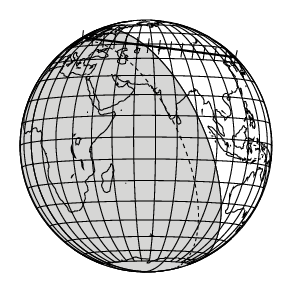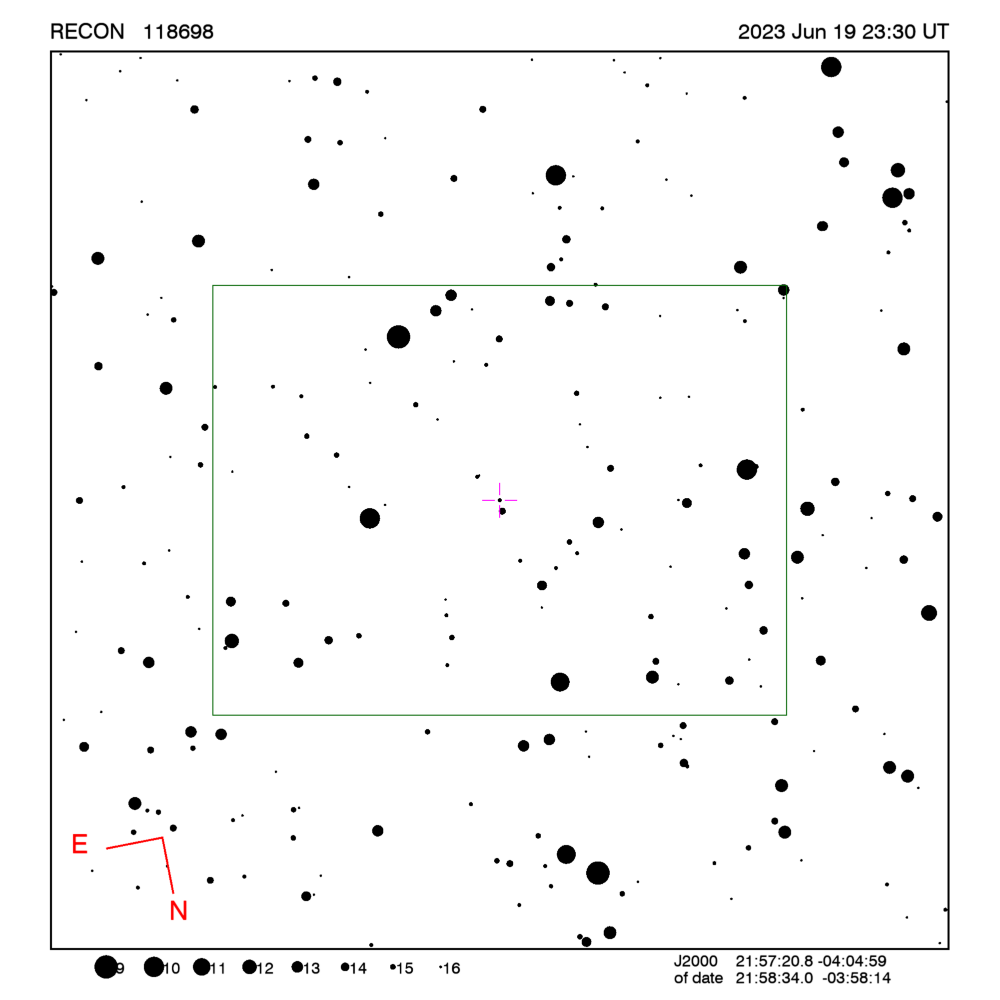RECON: TNO occultation with 118698
Event between (118698) 00OY51 and star GA0840:19842153
with event index number of 2111459
Geocentric closest approach at 2023/06/19 23:43:02 UTC
J2000 position of star is 21:57:20.8 -04:04:59
Equinox of date position of star is 21:58:28.9 -03:58:43
Stellar brightness G=16.3,
use SENSEUP=128 with the MallinCam and and exposure
time of 2 seconds with the QHY174 camera.
Star is 137 degrees from the moon.
Moon is 3% illuminated.
TNO apparent brightness V=23.8
 TNO is 34.9 AU from the Sun
and 34.4 AU from the Earth.
TNO is 34.9 AU from the Sun
and 34.4 AU from the Earth.
The TNO is moving 9.3
km/sec on the sky relative to the star, or,
1.3 arcsec/hr.
The 1-sigma error in the time of the event is 727 seconds.
The 1-sigma cross-track error in the shadow position is
4658 km.
The TNO has an absolute magnitude Hv=8.2
Diameter=138.0 km assuming a 5% albedo -- 14.8 sec chord
Diameter=56.4 km assuming a 30% albedo -- 6.1 sec chord
Dynamical classification is 7:4EEE
Star training set for 118698, (2023/06/19 23:30UT)
Object RA Dec mag sep mel
Fomalhaut 22:58:56.5 -29:29:50 1.2 29.26 133
Markab 23:05:55.9 +15:19:55 2.5 25.51 112
PPM 205831 22:00:08.3 -04:15:42 6.2 0.49 137
PPM 205801 21:58:31.1 -03:46:50 8.7 0.19 137
118698 21:58:34.0 -03:58:14 16.3 136
Positions are for equinox of date

Azimuth is measured in degrees eastward from north.
North is at an azimuth of 0, due East is at an azimuth
of 90 degrees, due South is 180, and due West is 270.
Do not use the listing below for the RECON CPC 1100 telescopes.
This is provided for other non-team facilities.
Star training set for 118698, (2023/06/19 23:30UT)
Object RA Dec mag sep mel
Fomalhaut 22:57:39.6 -29:37:24 1.2 29.26 133
Markab 23:04:45.8 +15:12:18 2.5 25.51 112
PPM 205831 21:58:55.0 -04:22:29 6.2 0.49 137
PPM 205801 21:57:17.8 -03:53:35 8.7 0.19 137
118698 21:57:20.8 -04:04:59 16.3 137
Positions are for J2000
Event circumstances last updated at 2021/10/25 23:33:32 UT
Marc W. Buie,
Southwest Research Institute
RECON
 TNO is 34.9 AU from the Sun
and 34.4 AU from the Earth.
TNO is 34.9 AU from the Sun
and 34.4 AU from the Earth.
